If you have heard of the ball python, you may have wondered why it is so called and is that this is a reptile that is not very big, it does not measure more than a meter and a half, nor weighs more than a kilo and a half.
The skeleton of this snake has about 250 vertebrae and is called a ball python because it is rolled on the body forming a spiral, placing the head in the center of this, forming a ball. Do you want to know what ball python teeth look like, and how many they have?
In this article, you will find this answer and other features that characterize them.
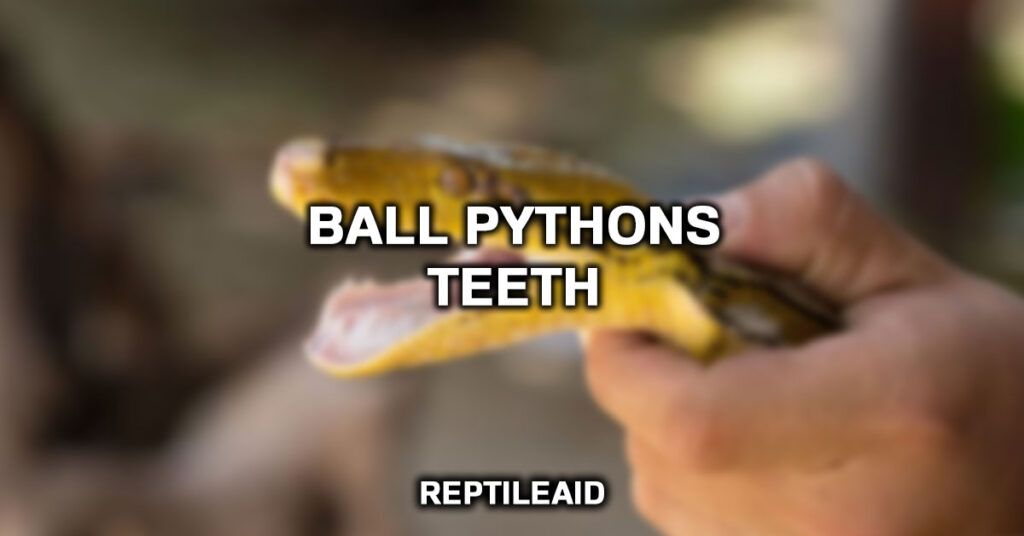
How many teeth does a ball python have?
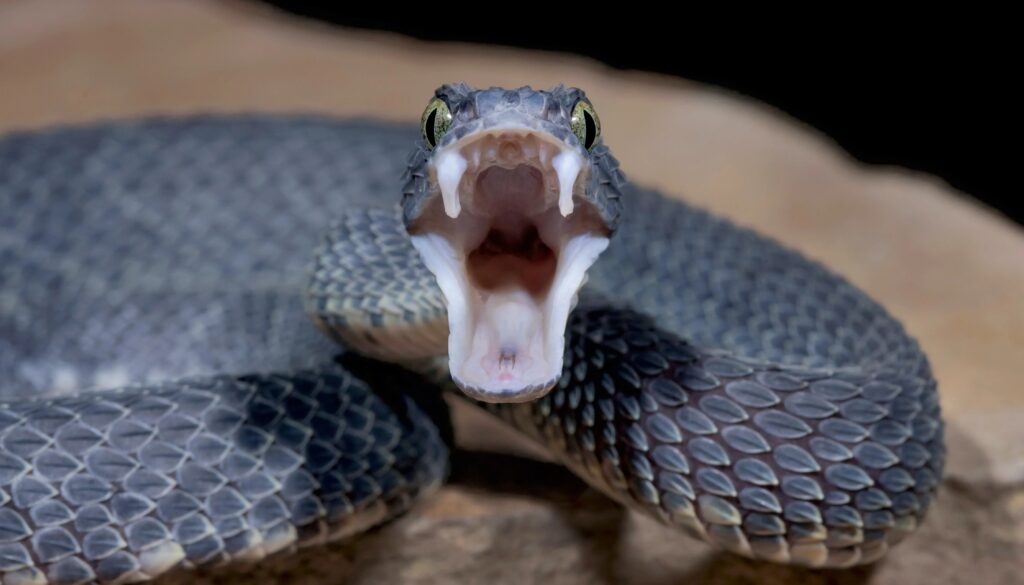
Surely, you are one of those who worry about the number of teeth in snakes, and even feel fear when you find out that a ball python can have up to 100 teeth.
Is that enough to make you shiver? You can relax, the really not as serious as it seems, ball pythons are fearful reptiles, and harmless, this type of snake can have 100 teeth distributed in four rows with a total of 30 teeth in the shape of spikes in the upper jaw. The remaining ball python teeth are distributed in two rows on the lower jaw.
Function of ball pythons teeth
Ball pythons have an additional tooth when they are very young called the egg tooth, large and very sharp, and has the function of serving to break the eggshell at birth, and they lose it a few days after hatching.
The teeth of snakes in the case of ball pythons have a function that is nothing like that of human teeth, the teeth of a ball python compared to the size of the snake, it can be said that they are small, are inclined towards the inside of the mouth, with the aim of clinging to the prey when biting.
These and other snakes do not chew food with their teeth, they eat it whole, so the main function of their teeth is to prevent food from falling out of the mouth while eating.
Type of ball pythons teeth
The type of teeth of the ball pythons is called aglyphs, they have the characteristic of being solid, serve as presses, and have a curvature towards the inside of the body.
This type of tooth lacks grooves, and each tooth is part of a row, similar in size and shape to one another. This snake is not a venomous species so the teeth do not inoculate any type of substance toxic to humans.
Teeth molt
Ball pythons, according to their size and age. have a certain number of teeth. Thus, the larger and older ones have a greater number of teeth than the smaller and younger ones.
A characteristic feature of ball python teeth is that they lose them, but at the same time, they replace them with amazing speed, this fact occurs very frequently throughout the lifetime of these reptiles.
Do ball pythons bite often?
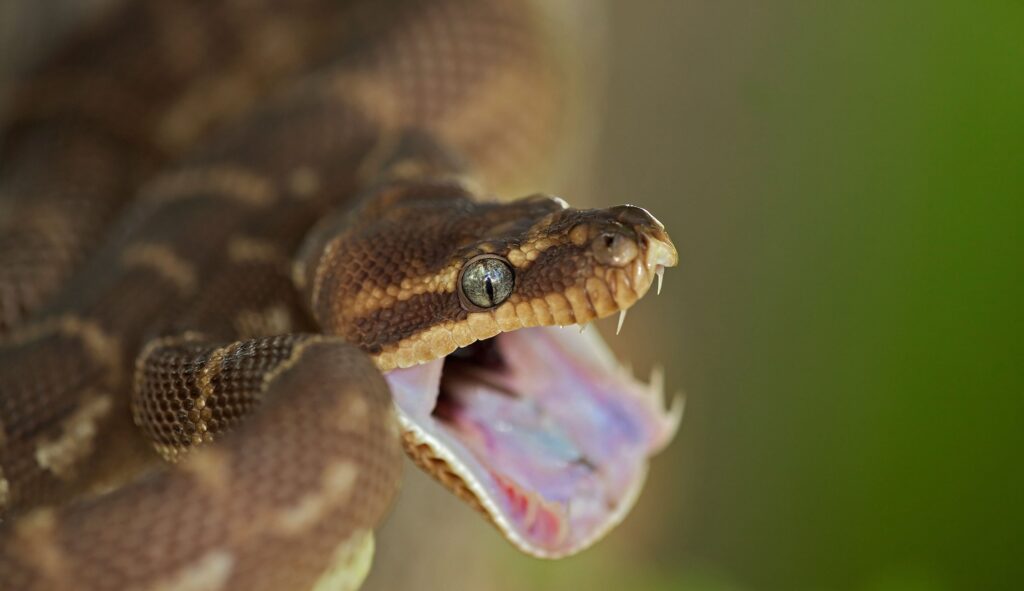
Ball pythons very rarely bite, it is a very calm snake, they never try to bite to defend themselves, when they do bite it is more due to imprudence or carelessness of whoever tries to handle them, these situations usually occur when trying to feed them.
The main reason why these pythons do not bite is that they roll up their body forming a circumference and hide their head inside their body, so they do not put themselves in a position to bite or attack.
To control their prey they do not do it by biting, this snake wraps itself around the prey’s body coiling around it, and then squeezing it until it suffocates.
When the prey stops moving is when the ball pythons use their mouth to bite in a gulping manner to swallow the prey without biting it to pieces, they swallow it whole, they do it slowly, and it takes between one and two days to digest it.
To make sure that a ball python bites, you must know some signs that they themselves announce with the behavior they present, they are very subtle reptiles, which tend to seek shelter and protect themselves when they feel threatened, and the first thing they protect is the head.
Expert Tip: If you notice that the Python has its mouth open, that it is emitting a kind of hissing sound, that it is holding its head upright, and that it is staring, you should learn that these are signs that it will try to bite.
Although normally, they are calm animals and tend to be friendly it does not mean that they cannot bite, they can get stressed easily and in this state, they can try to bite, but because they are gentle snakes they can calm down easily.
The first thing is to investigate if the snake does not have any health problems and let it use the vomeronasal organ to recognize the smell of the person who manipulates it, and gets used to that person, for this it is necessary to give it time.
It is necessary to understand that these snakes have defensive and offensive attitudes when they act defensively they generally do not bite, they strike with their nose looking for the object that threatens them to move away if in a defensive attitude, they bite, they will release immediately.
When they act offensively, they do it naturally to feed, so they bite and wrap themselves around the object they bite, they understand that it is the prey they capture to feed. When they stick out their tongue, it means that they are sniffing, recognizing, that they are calm, in this case, they do not represent a bite risk.
Do ball pythons have fangs?
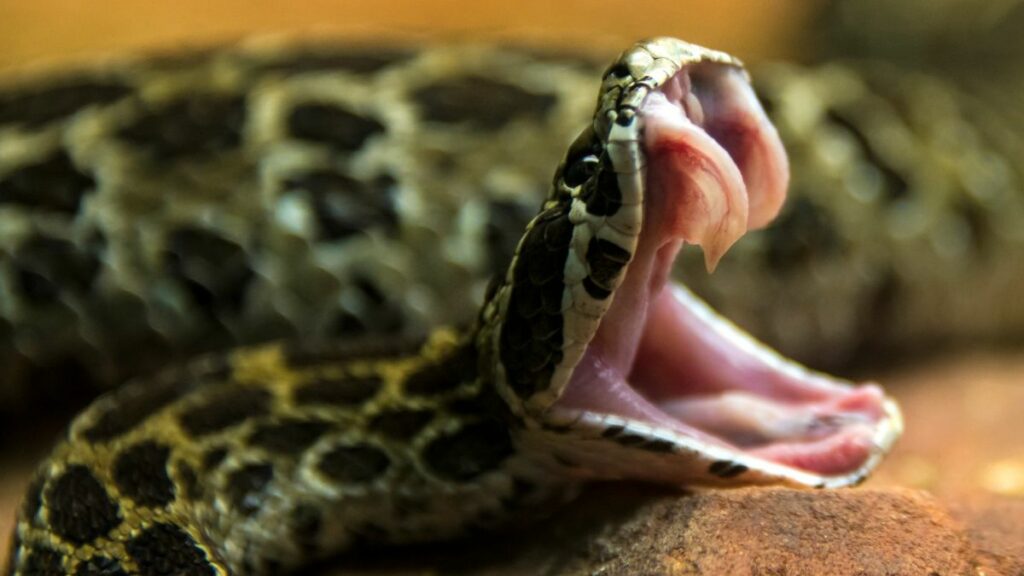
This type of snake is known as a contractor, it uses the rings of the body to strangle the prey, squeezing it tightly until it stops breathing, at that moment they loosen the body to release it, and that is when they proceed to eat it whole.
So they do not need to inoculate any kind of poison to kill them, for this reason, it is a kind of snake that lacks fangs, so you do not have to worry.
The fact of having teeth of the Aglifa type indicates that it does not have the capacity to produce or release venom or toxic substances. This snake lacks fangs because as it has evolved, it has not needed to bite the prey it needs to feed.
What do ball pythons eat?
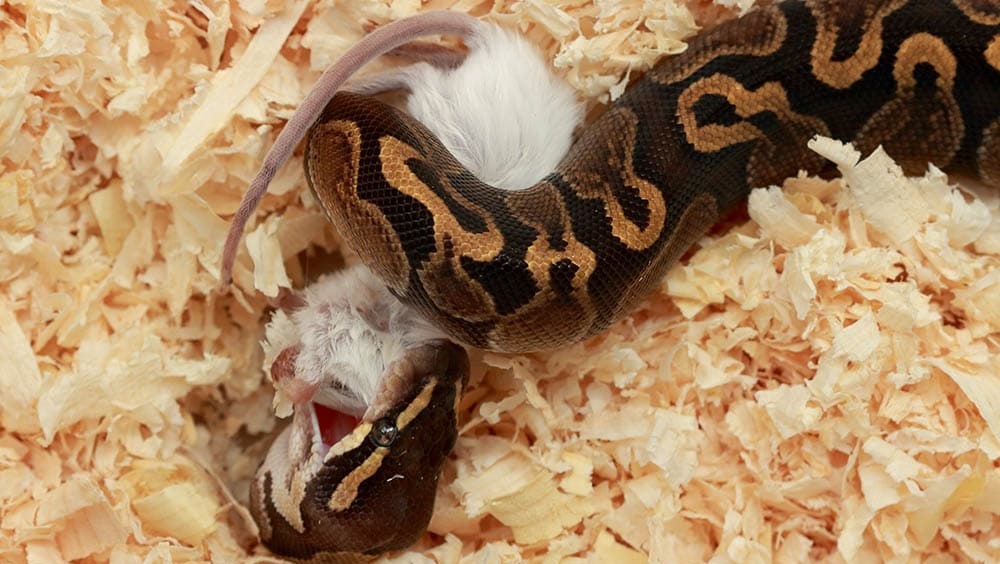
This snake is considered a carnivore, this genus, belongs to the animals that base their diet on meat, they generally feed on mammals of small sizes according to their morphology, they can expand their jaws to swallow the animal they have hunted, and that sometimes has dimensions greater than those of their head.
They use pits that work by detecting the heat produced by the blood of their victims as it runs through the body. These pits are organs formed by slits that capture thermal signals, since other senses, such as the auditory sense of this snake, are not as developed, these slits are used to track their food and locate it in time, as a kind of radar.
Adult ball pythons in the natural environment look for rodents that do not exceed the size of the snake’s body thickness. Among these animals are rats, gerbils, shrews, small birds such as chicks, different birds, and their young, frogs, toads, and some fish.
Feeding frequency of ball pythons
Once the ball pythons have eaten prey, they take up to 2 days to digest it. and once they eat. They do not need more nutrients to cover their body needs until after several days or even a week, especially when they are molting their skin, they spend more days without feeding.
Another aspect that influences the feeding frequency of these snakes is their age, and according to it, they can last up to two weeks without needing food.
Feeding ball pythons in captivity
When a snake of this type is kept as a pet. it can be kept on a diet similar to the one they find in nature, based on small mammals, and rodents, and it is healthier for the snake to avoid feeding them with hamsters and birds, to avoid complications with feathers and excessive hair of these rodents.
It is customary when pets are kept in a terrarium to offer them pre-killed animals so that they feed more easily, it is a gesture to pamper them.
Special care should be taken in the size of the animals that are given to eat. these should not be larger than the thickest part of the python’s body, if the snake is very young, young animals should be given to it, such as mice a few days old and if it is more adult, give it a more varied diet, and remember the ideal feeding frequency.
What to do if your ball python bites you?
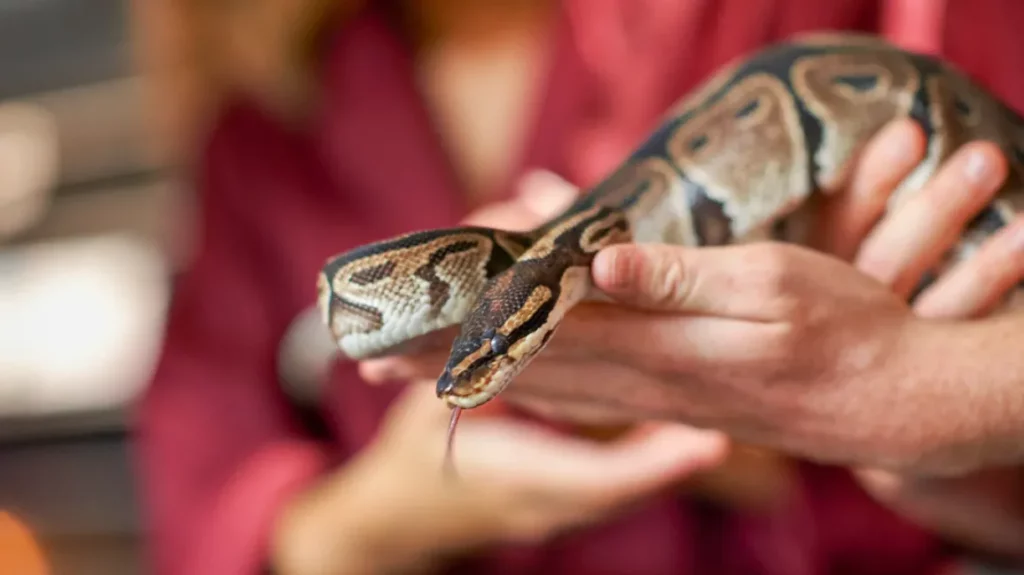
In the previous paragraphs, we indicated that it is not common for these snakes to bite frequently, this is due to the calm character and the fearful attitude they show hiding their head in their body when they feel threats, however, due to the lack of precaution in the handling of the python it can happen that you suffer a bite.
If the Python bites you, do not try to remove it abruptly because the snake teeth point backward and this will only cause the bite to cause a greater tear in the skin, and the wound to be deeper, although this animal does not have jaws strong enough to produce a serious wound.
To make the snake release the bitten area, use an efficient technique, if the snake does not release immediately, spray water over the animal’s head, this action makes the animal release the biting part.
If this happens, you should keep in mind, first of all, that this is not a snake that injects venom when it bites, remember that they do not have fangs or venomous glands, as any wound in the skin will require care, but it should not be a situation to be alarmed.
You can use disinfectant soaps, such as Betadine, and wash the area well. You can also apply alcohol and some antibiotic ointment, even though they do not have venom, many animals such as reptiles are transmitters of salmonella.
These cases can be avoided, if you follow the necessary recommendations for handling the python, such as knowing when it is stressed, for this you should identify very well the attitude that the snake shows when you approach it.
Expert Tip: You should avoid sudden movements before the animal, so that, it does not feel threatened, in spite of being a calm and peaceful animal, it has a defensive attitude to which it responds with a bite.
Never try to touch it from behind, any movement you make with your hands should be slow, and from the front of it, and never press it when grabbing it.
It is better to use the special hooks to manipulate them, and document enough about the attitudes that a ball python shows when it feels threatened, and how you should feed it without running the risk of altering it.
Above all you should avoid having them near children, and other animals, and do not keep them loose in the home, they should be in a terrarium, or tank, these are fun and cute pets, but they are not the same as other types of pets, they should be kept with the necessary prevention.
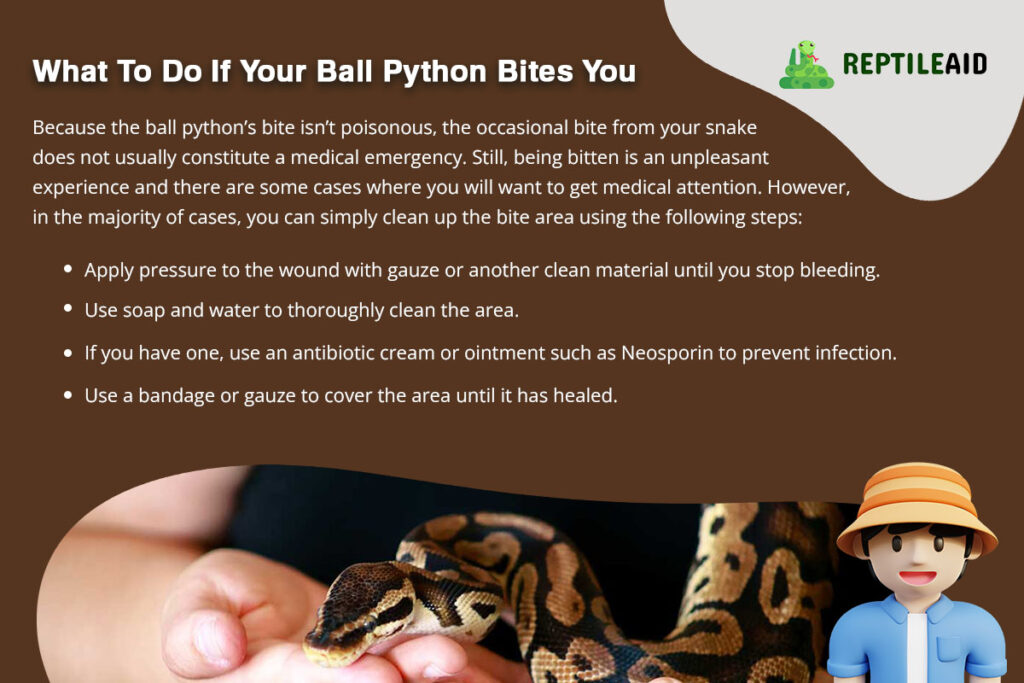
Conclusion
Ball python’s teeth do not inject poisons, nor do they have them to chew, they use them to retain food, these tend to be fragile, if they are given very hard food, they can lose these teeth, and although these snakes replace them easily, this will cause difficulties in their health.
Provide them with adequate food, tender meats, and extreme care when handling them, in order to minimize the risk of suffering bites.
